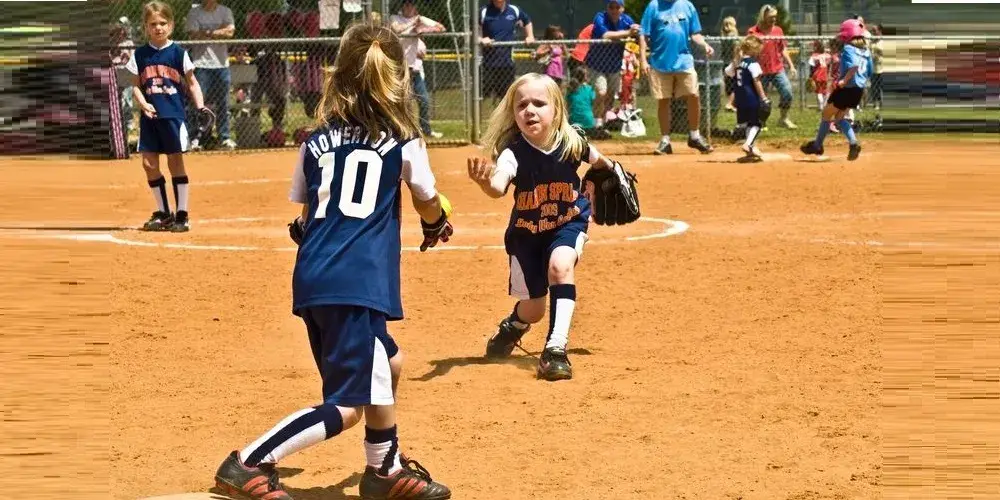
The softball first base positioning is important and will almost always determine the success of any play around the base. The bunt play, the first out, coverage of first base on a hit or pickoff and the cut play are all key factors in the success of the defense. Knowing the lateral movement reach on the backhand fielding ability and whether she is left or right handed for example will dictate the distance from the foul line that she will play. This is important because if a ball gets past her along the foul line, it is likely that it will turn into extra bases, unless the right fielder is great at backing up.
Softball First Base Positioning Considerations:
- the score of the game
- where the runners are on base
- the strength of the hitter
- the strength of the defensive player
- the signal given to the pitcher
- the strength of the pitcher
There are some simple things that will generally need to be known about playing the infield which are important in making decisions on where to play. One of them is that the closer to the batter, the better the reaction time needs to be for fielders. At the same time, the further she is away from the batter, the more vulnerable she is to a bunt.
On a sacrifice bunt situation, the first base player needs to be aware of the slap bunt so caution is recommended on a left handed batter. If a bunt is not anticipated and the batter is a strong left handed hitter, playing closer to the base is recommended to allow time for reaction to the ball. Be careful not to be on the baseline between first and second if there is a runner on first base. It is also important that the first base player not be near the base or on the baseline without the ball after it is hit because many obstruction calls occur there. This is when the defensive player without possession of the ball makes contact with the runner coming from home plate
If there is a pickoff play being called, playing behind the base is sometimes recommended however it gives the play away and it could be easy for the ball to hit the runner and deflect giving her an easy advance to the next base. Positioning in front of the base but close, to receive the ball along the baseline is more effective. The first base player can also be a decoy while the second base player comes up to the baseline to take a throw instead, tagging the runner that is just off the base.
If the batter is one who is very successful at hitting up the middle, the first base player may play more to the inside of the field to cover the space left vulnerable by the second base player who has shifted over to cover more of the middle of the field. This can leave a hole along the baseline which makes it that much more important for the right fielder to cover the foul line. An out can be achieved at first by a good right fielder who is on a ground ball right away.
The first baseman will position closer to home when:
- the infield is wet and soft or is a grass infield
- the second baseman is good at covering first
- a weaker, but fast hitter is at bat
- it is a bunt situation
- a runner on third with fewer than two outs to back up home
The first baseman positions further from home when:
- a strong, left handed pull hitter is at bat
- they will not likely be pulling to the opposite field unless the pitcher pitches outside
- pull hitters are generally stronger hitters
- a slow runner is at bat
- a pitchout and pick off attempt on a runner at first base is called
- there are two strikes on the batter or two outs (a bunt is unlikely)
- the fielder reads and responds quickly to bunts and slow rollers but does not have a quick reaction time
It is advisable to move right toward second base when
- more hits are expected up the middle of the field
- a strong, right handed pull hitter is at bat
- a left handed late swinging or opposite field hitter is at bat
- the pitcher is slow, tiring, or throwing a change up
- the fielder is a right handed thrower with a weak backhand catch
A shift left or toward the first base line is recommended when
- a strong right handed pull hitter is at bat
- in the late innings of a close game to guard the line against extra base hits
- the pitcher is fast and overpowering on right handed batters
- it is harder for hitters to get around on the pitch so will likely be late
- hitters will hit to the opposite field
- being left handed
- there is more lateral coverage on the right side
As we know first base is a position that requires a good glove and an ability to read the play quickly. Knowing where she positions before the ball is pitched is something that takes experience and some common strategy knowledge. I recommend that if a player wants to play this position well, it is a good idea to watch other first base players and visualize where to play in each situation. Spend time practicing each situation and talk to the coaches about the opposition.

